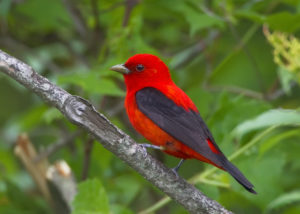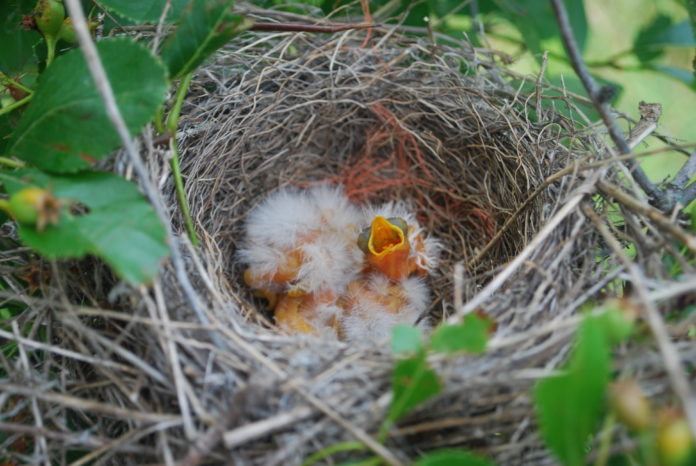By Larry Cornelis – President, Sydenham Field Naturalists
Birdwatching is a very popular hobby enjoyed by people of all ages and walks of life.
As a young boy, I always had an eye and ear for birds and as an adult, I’m a pretty serious birder.
I take trips far afoot to enjoy birds and nature.
For the avid birder, there’s great anticipation and joy in seeing a species for the first time.
Birders call these “lifers” and we add them to our life list.
But you don’t have to travel to enjoy birds.
You can enjoy them right in your own backyard.

You may be surprised by the species that visit your backyard, that is if you have what will attract them.
There’s a lot you can do to attract birds to your property.
Fundamentally, you need to provide birds with their basic needs which are food, shelter and water.
There is more to providing food than you may think. Most people will put up bird feeders to supply food for birds and that works.
I have a few bird feeders on a squirrel proof feeder station I built and it’s a real joy to watch the birds feeding there.
But it’s usually the same few species daily.
I see species like Goldfinches, Nuthatches and Cardinals, which are very beautiful birds.
In fact, only about 20% of the birds that visit your yard will go to feeders.
The other 80% are not interested in your sunflower seeds.
They are looking for insects to eat.
And if songbirds are nesting in your backyard (or anywhere close by) they will need lots of insects to raise their young.
Baby birds need protein and fat to grow and that comes in the form of insects, mainly caterpillars.
To raise a family of five baby chickadees, it takes between 7,000 and 9,000 caterpillars (and a few other insects).
In order for your property to have that many caterpillars you will need the plants that support the caterpillars.
Native plant species are the best at doing this because they co-evolved with our native caterpillars and insects.
Non-native introduced plant species do not have this evolutionary bond and our native caterpillars do not recognize them as food.
You may be surprised to learn that the best plant species for supporting caterpillars is an Oak.
Oaks support over 450 different species of caterpillars in our area.
So plant an Oak or two and you will attract and support songbirds as they migrate through and/or nest in your yard.
The more native plants you have in your landscape, the better it will be at attracting songbirds.
Basically, you need less lawn and more native trees, shrubs and wildflowers.
This also provides shelter and nesting sites (you can also put up birdhouses).
These native plants also provide seeds and fruits for birds to eat through the fall and winter.
To supply water, you can simply install a bird bath or maybe build a water feature such as a bubbling rock or small pond.
Songbirds are in decline and research indicates we have lost three billion birds in North America in the last 50 years.
Many species are still declining and are ranked as “species at risk” of extinction.
Our natural environment would suffer greatly without birds. Let’s do our part and help birds in our own backyards.
We can make a measurable difference by providing what the birds need.
This will ensure there are birds for future generations to enjoy.















